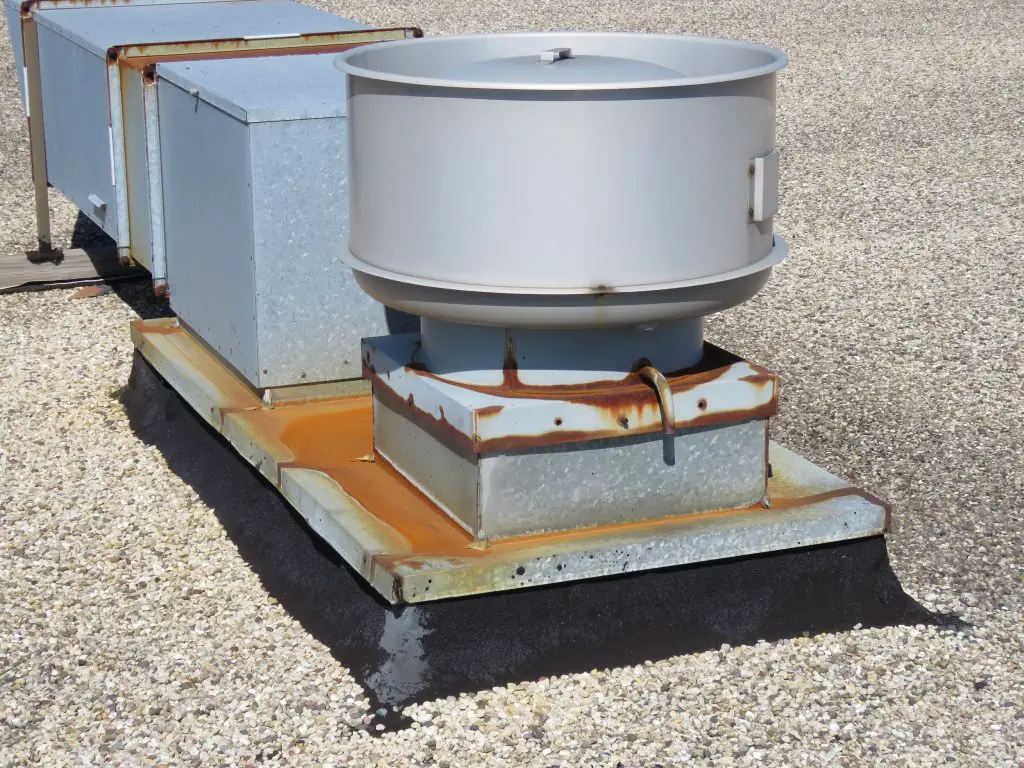Curb Adapters for Rooftop HVAC Units
By Jack Gray, Roof Online Editor • Last updated March 1, 2024
A curb adapter for a rooftop HVAC (Heating, Ventilation, and Air Conditioning) unit is a custom-fabricated metal piece that allows a new HVAC unit to fit onto the existing support structure or “curb” of an older unit. This is particularly useful when replacing an outdated or malfunctioning HVAC unit with a new one that might have different dimensions, weight distribution, or ductwork connections. Curb adapters are typically made out of sturdy galvanized steel.
Curb adapters are also sometimes used when replacing skylights or heat and smoke vents.
The main purposes of a curb adapter include:
- Ensuring Compatibility: It bridges the gap between the footprint and connection points of the new HVAC unit and the existing rooftop curb and the (usually) large roof penetration framed by the curb. This allows the new unit to take advantage of the existing roof penetration without having to cut a new hole in the roof or damage the roof by removing the existing curb. Curb adapters reduce or eliminate the need for extensive modifications to the roof or the HVAC unit.
- Maintaining Structural Integrity: It supports the weight and accommodates the operational stresses of the new unit, ensuring that it is securely mounted and operates safely.
- Simplifying Installation: By adapting the new unit to the existing curb, it reduces the complexity and cost of installation, avoiding the need to construct a new support structure.
- Maintaining the Building Envelope: It helps maintain the integrity of the roof by avoiding unnecessary penetrations or alterations, which could lead to leaks or other structural issues.
- Ensuring Proper Airflow and Sealing: A well-designed curb adapter also ensures that the ductwork aligns properly, minimizing air leaks and maintaining the efficiency of the HVAC system.
Curb adapters are normally custom-made in a sheet metal fabrication shop based on the specifications of both the new unit and the existing curb, taking into account factors like weight distribution, center of gravity, duct alignments, and any additional requirements like accounting for roof slope or providing enhanced support for heavier units.
Curb adapters are not always an option. If you’re wondering if you can use a curb adapter, “Can I Use a Curb Adapter?“ does a very good job of answering that question. Found on the website of T/E/S Engineering.
Click on an image to enlarge it.













